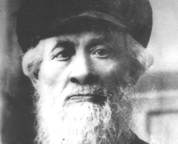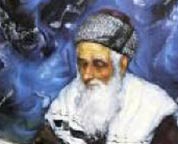Yerushalayim…Although security has greatly improved on Har Hazeisim, the gravesite of Rav Ovadia of Bartenura (1445 – 1515) remains one of the outstanding exceptions. According to Avrohom Lubinsky, co-chairman of the International Committee for Har Hazeisim (ICHH), the grave borders the nearby Arab neighborhood of Silwan. In recent weeks, the gravesite was found desecrated that may be due to vandalism or to the garbage thrown from the neighborhood above. In the past, the site was used as a drug haven for neighboring youths.
“We cannot tolerate the abuse and desecration of the burial site of one of the legendary sages of the Jewish people. No Jew can learn Mishnah without his brilliant commentary.” Mr. Lubinsky said. He called on the authorities to secure the site, making it more accessible to visitors, and installing surveillance cameras. His call was joined by Rabbi Tzuriel Krispal, the executive director of the Council of Jewish Cemeteries (Moetzet Batei Almin).
Rav Ovadia was born in Bartenura, Italy in 1445 but emigrated to Eretz Yisroel in 1488. Once there, he led the revival of communal life in Yerushalayim. He also lived in Chevron. He is best known for his commentary on the Mishnah although he also published the influential analysis on Rashi on Chumash. Amongst his best known efforts was his role in alleviating the community from an unjust tax burden and setting up a charity support network. After the Spanish Inquisition of 1492, masses of Jewish refugees arrived in Eretz Yisrael and Rav Ovadiah became a spiritual leader for them as well. He set up a yeshiva in Yerushalayim, one of the first in modern times and he became a respected authority for both the Jewish and non-Jewish communities in the holy city. His writings are invaluable in describing the Jewish community of that period. Published letters describe life in Rome, Naples, Sicily, Alexandria, Cairo, Gaza, Hebron, and Bethlehem.
Mr. Lubinsky noted that the grave of the Bartenura was one of the most visited on Har Hazeisim. “It’s one of the few sites on Har Hazeisim that does not have cameras and lighting,” he noted. He expressed the hope that the Mayor’s office, the police, and other security forces on Har Hazeisim would recognize the holiness of the site and would provide the security that is needed for such a sage.
The ICHH was founded a decade ago by community activists and is credited with reversing the “shame” on Har Hazeisim that included many destroyed graves, strewn garbage, dead animals and a general fear by visitors of being stoned or vandalized. Working with the national and municipal governments, the ICHH was instrumental in the restoration of graves, the installation of 174 surveillance cameras as well as a monitoring command center, regular sanitation services, lighting, the establishment of a police station and the stationing of a garrison of border police.





